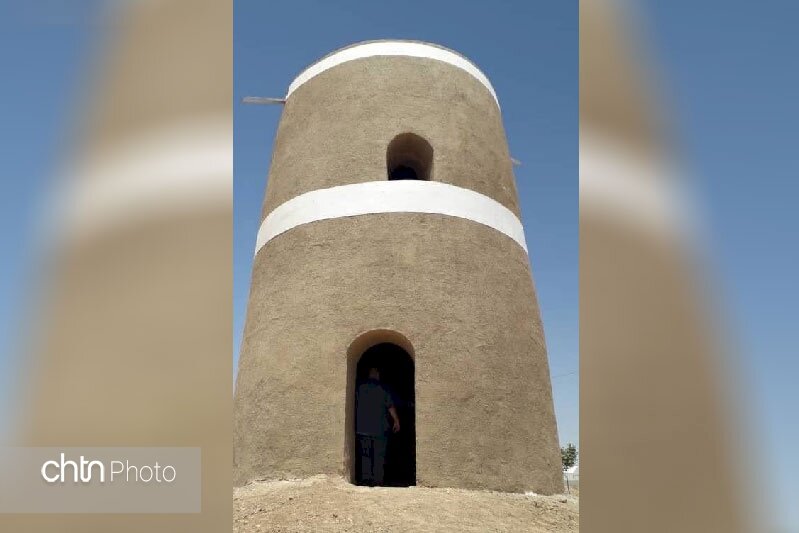Restoration completes on centuries-old pigeon tower

TEHRAN –The second phase of a restoration project on a mudbrick pigeon tower, where droppings were once collected as fertilizer centuries ago in Isfahan province, has come to an end, a local tourism official has said.
A budget of 500 million rials (about $12,000 at the official exchange rate of 42,000 rials per dollar) was allocated to the project, CHTN quoted Mohsen Mazaheri as saying on Tuesday.
The project aimed to repair the historically significant tower, which has been damaged by time and rainfall, the official added.
The project was launched after cultural heritage experts evaluated the tower at the beginning of the current Iranian year (March 21), he noted.
The pigeon tower is located in Azizabad village of Tiran-Karvan county that is home to many other similar monuments, most of which date back to the Safavid (1501-1736) and Qajar (1789-1925) periods, he mentioned.
Each of such bird homes can reportedly hold as many as 14,000 pigeons. It is not clear when such pigeon houses were built first but according to the comments by ancient travelers, at least they have been existed since 800 years ago. For the first time, “Ibn Battuta” the famous Moroccan traveler mentioned pigeon houses.
Moreover, according to historians Tamerlane after knowing their functions, ordered to built such places in his capital, Bukhara. Also the famous French traveler, Sharden who visited Iran during the 16th century, again mentioned different pigeon houses in Iran, especially in Isfahan and Yazd. During the invasion of Afghans, most of them were ruined, probably as a result of being used as shelters.
Isfahan, in central Iran, is famed for having a rich heritage of pigeon towers; most of them were built in the 17th century. The architecture of these towers is based on the vernacular architecture of Iran.
The environs of Isfahan are dotted with bizarre but very picturesque pigeon towers. In contrast to a European dovecot, which often housed pigeons to be used as meat, in Iran, the pigeons were never eaten. Here pigeon towers were used as guano factories to produce fertilizers for the melons that have always been the pride of the region. The guano was also used in the manufacture of gunpowder.
Pigeon towers are of considerable size, often 10.5-12 m high, of sturdy construction and fine proportions. The pigeon houses are usually built of mud-brick. Unbelievably varied, often decorated by ornate cupolas and muqarnas friezes, they are so charming that it is well worth going even great distances to see them. It is an efficient use of space inside the towers; the walls were strengthened with interior arches. The ceiling is of a barrel-vaulted kind.
Although there are never two identical pigeon towers, all conform to a single plan. Each tower consists of an outer drum, buttressed internally to prevent collapse and to support the inner drum that rises perhaps a third as high as the main structure. Pigeons can get to their nets through some passages which are such narrow that is impossible to other birds such as eagles or falcons to enter. At the bottoms, there are some smooth parts of stucco works. These parts can avoid snakes to ascend. In some cases, they put a bowl of milk at the center with limes around it. As snakes like milk, they try to get it but will be stuck in the lime.
Nowadays, due to the wide usage of chemical fertilizers, such pigeon towers just convey memories of the past as significant but strange buildings.
ABU/AFM
